Networks Project
In analyzing the church congregation networks between 1735-45, the program gives the viewer the opportunity to view the vast interweaving connections between members of the congregation. In viewing the network through the filter of time, selecting subsequent years allows the viewer to witness the evolution of the complex network that existed by 1745. The first two years of the congregation consisted primarily of small, detached networks. However, as the years progress, networks become more complex: new networks are created, existent networks grow in size, and previously disconnected networks become intertwined. One benchmark year in the growth of the congregational network was 1738, when significant connections between disjointed networks were created.
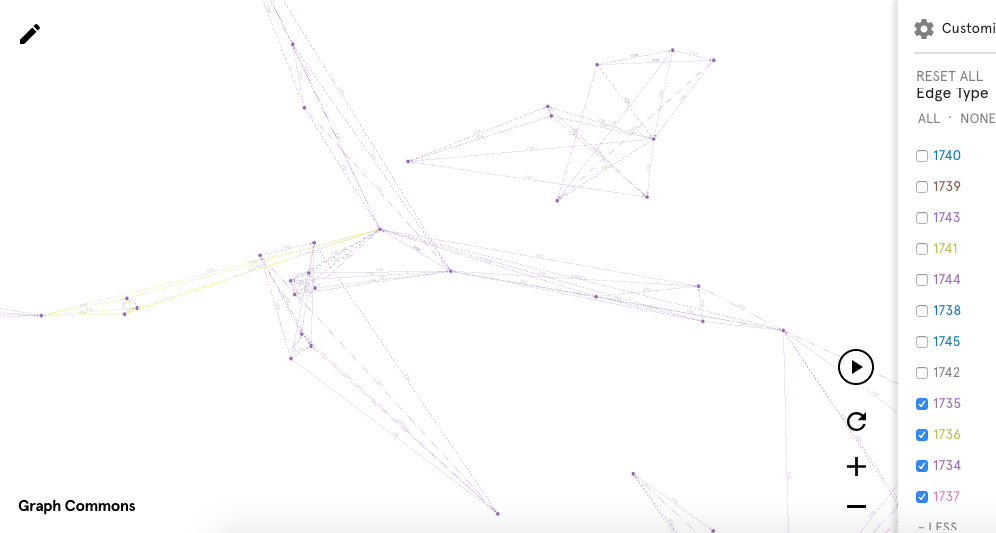
1737 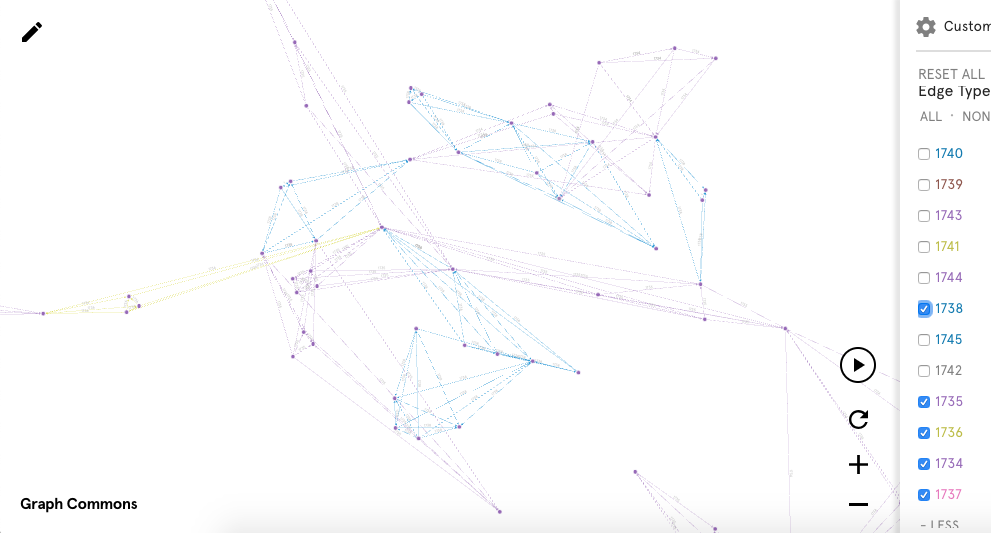
1738
The following year, 1739, was marked by increasing connections between “far away” or largely disjointed networks.
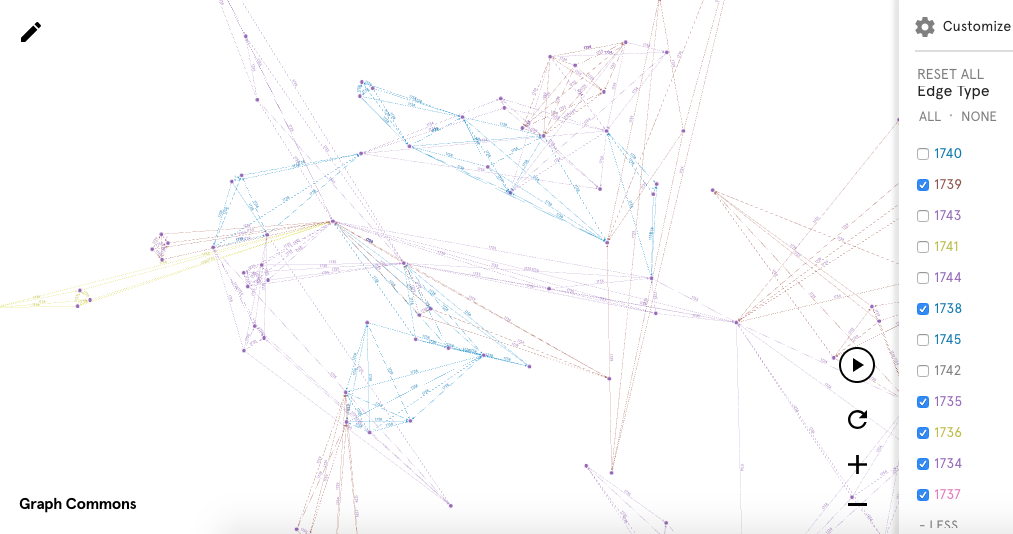
When measuring the networks by the betweenness centrality, the map becomes increasingly complex, with numerous connections across distinct nodes. These connections branch out from large “node centers” around individuals with a high degree of betweenness centrality: Anna Clement, Esras Sr, William Prentop Jr., Leut Burrows, Aron Oseragighte, and Ezras Teg are some of the more prominent figures in this view.
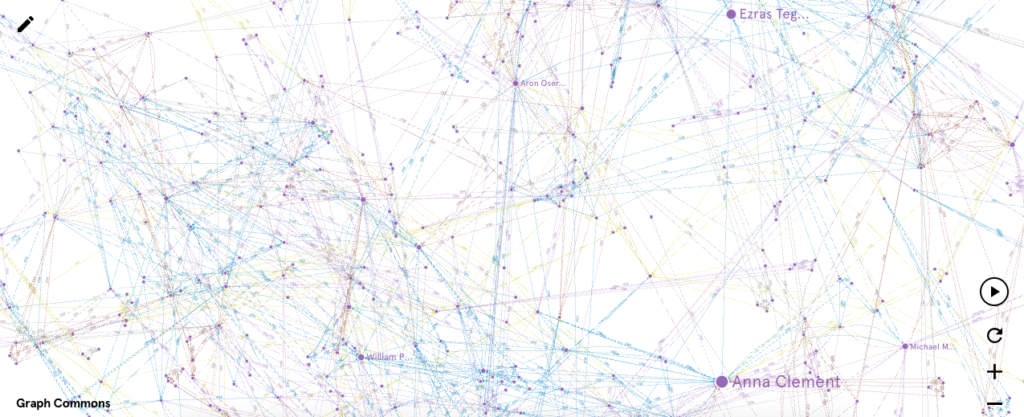
When returning to the network view based on degree centrality, many of these figures remain prominent with a number of connections to other individuals, including Anna Clement, Esras Sr, and Aron Oseragighte. However, there are others such as Mary Butler and William Mills who do not appear to have as high of a degree of betweenness centrality.
When viewing clustering patterns, many of the figures who exhibit a high degree of betweenness centrality and/or degree centrality have clusters build around them; Oseragighte, Clement, and Mills are a few examples of this. However, several other clusters form around individuals not prominent in these other views, notably Peter Young, Isaac Wemp, Abraham Canostens Peterse, and Cornelius Brown.
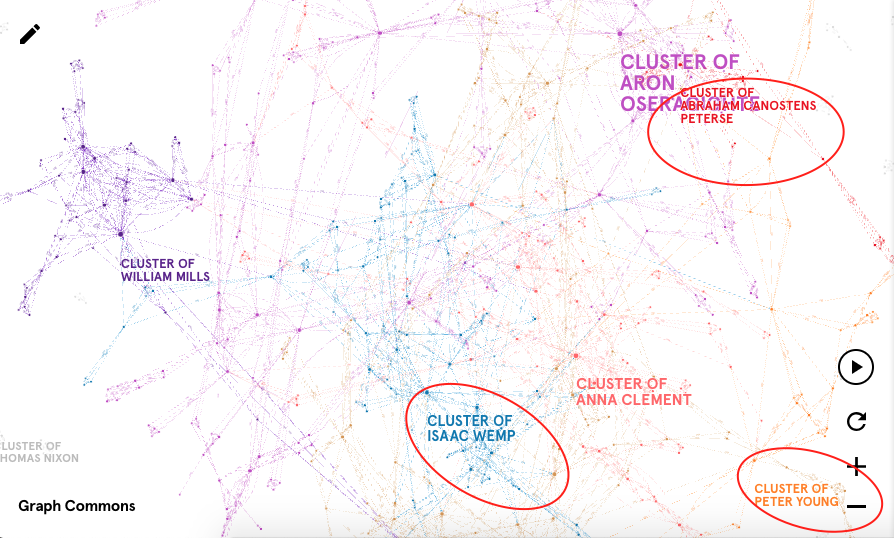
Overall, viewing these different elements of the network gives the audience an insight into potentially important or well-connected individuals within the congregation. It highlights those that are perhaps more obviously within the realm of influence or significance, as well as those whose connections might be more abstract or subtle.